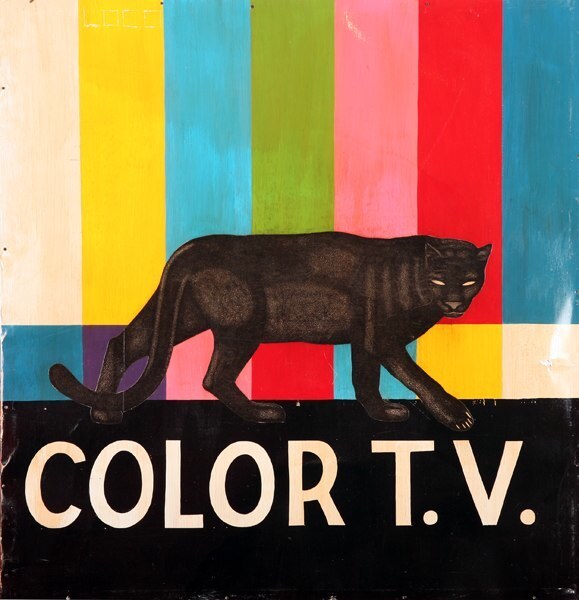Date Farmers: Desert Detritus Becomes Chicano Pop Art
The Coachella Valley is a world in-between. Located near the halfway point between Los Angeles and Phoenix, alongside a steady stream of speeding cars on the I-10 freeway, America's southernmost intercontinental highway, the Coachella Valley has always been transitory place. Native peoples moved through the region, following the rain cycles and dry seasons; retirees and Veterans parked their RV's in mobile home communities; Coyote human traffickers smuggle families and migrant workers through the expansive deserts. Even when the massive Coachella Valley Music and Arts Festival descends on the area, thousands of concertgoers from around the world stop in, just for a temporary visit. It was here, at this epicenter of cultural collisions, that artists, the Date Farmers, created multifaceted art of opposites.
The duo Armando Lerma and Carlos Ramirez grew up in Indio, a small town in the Sonoran Desert, near the desert void where General Patton once practiced tank maneuvers for North African battles of WWII. Lerma and Ramirez have deep roots in the region. Lerma's father owned a date farm, and Ramirez once worked there as a picker. Ramirez's mother collaborated with civil rights leader Cesar Chavez. But it wasn't until the late 1990s, that the artists met at a gallery show in the Coachella Valley and began sharing the influences that they amassed from their life experiences. They were Chicano, but also American. They lived alongside Native Americans and Mexican nationals, but travelled back and forth from the multicultural mélange of Los Angeles. Their works became records of this polymorphous identity--their transitive life existing in a liminal reality between cultures--collecting multicultural ephemera and detritus, and combining it into playful sculptural assemblage pieces.
On any given work, the Date Farmers use house paint, sparkly stickers, strip club fliers, corrugated metal siding, and wheat paste posters with their hand-drawn images of desert iconography. Snakes, spiders, scorpions, and other bits of nature from their hometown appear in these works. They mix Catholic symbols and figures with commercial imagery, giving brand logos and religious icons the same attention to detail.
In 2010 the esteemed Ace Gallery, in Los Angeles, gave the Date Farmers unrestricted access to the space, to showcase and develop future pieces. In back of the gallery, the artists built a bar and shack-turned-movie-theater, where their videos would be screened.
Many of their pieces were in a constant state of flux, as they added more images or painted over the works. Each visit to the gallery would reveal new takes on their ever-evolving art. The Date Farmers make Chicano pop art; they are desert Rauschenbergs, infusing abstract expressionism with a politically charged, pop culture update.



Dig this story? Sign up for our newsletter to get unique arts & culture stories and videos from across Southern California in your inbox. Also, follow Artbound on Facebook, Twitter, and Youtube.